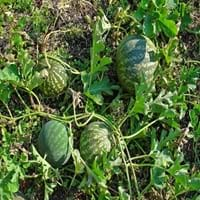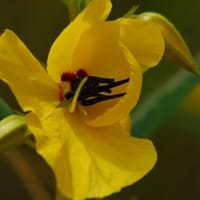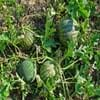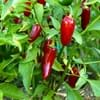Origin
Hybrid origin, Africa, Southern Africa
Mediterranean
Types
Not Available
Chamaecrista fasciculata Greene fasciculata, Chamaecrista fasciculata Greene macrosperma
Number of Varieties
Not Available
Habitat
along watercourse, Grassland
Dry areas, Open areas, Upland sand prairies, Upland savannas
USDA Hardiness Zone
10-12
Not Available
Sunset Zone
A3, H1, H2, 1a, 1b, 2a, 2b, 3a, 3b, 4, 5, 6, 7, 8, 9, 10, 11, 12, 13, 14, 15, 16, 17, 18, 19, 20, 21, 22, 23, 24
A1, A2, A3, H1, H2, 1a, 1b, 2a, 2b, 3a, 3b, 4, 5, 6, 7, 8, 9, 10, 11, 12, 13, 14, 15, 16, 17, 18, 19, 20, 21, 22, 23, 24
Habit
Prostrate/Trailing
Vining/Climbing
Minimum Width
Not Available
Flower Color
Yellow
White, Pink, Lavender
Flower Color Modifier
Bicolor
Bicolor
Fruit Color
Green, Crimson, Dark Green
Green
Leaf Color in Spring
Light Green
Green, Sea Green, Gray Green
Leaf Color in Summer
Green, Gray Green
Not Available
Leaf Color in Fall
Green, Gray Green
Green, Blue Green, Gray Green
Leaf Color in Winter
Not Available
Green, Blue Green, Gray Green
Leaf Shape
Irregular
Compound
Plant Season
Summer, Fall
Spring, Fall, Winter
Sunlight
Full Sun
Full Sun, Partial Sun
Growth Rate
Very Fast
Fast
Type of Soil
Loam
Clay, Loam, Sand
The pH of Soil
Neutral
Neutral
Soil Drainage
Well drained
Well drained
Bloom Time
Indeterminate
Early Spring, Spring, Late Spring, Fall, Late Fall, Early Winter, Winter, Late Winter
Tolerances
Drought
Drought
Where to Plant?
Container, Ground
Ground
How to Plant?
Seedlings, Transplanting
Seedlings
Plant Maintenance
High
Medium
Watering Requirements
Requires consistently moist soil, Requires regular watering, Requires watering in the growing season, Water Deeply
Needs more water during establishment, Water deeply about once a week
In Summer
Lots of watering
Lots of watering
In Spring
Moderate
Moderate
In Winter
Average Water
Average Water
Soil Type
Loam
Clay, Loam, Sand
Soil Drainage Capacity
Well drained
Well drained
Sun Exposure
Full Sun
Full Sun, Partial Sun
Pruning
Remove damaged leaves, Remove dead leaves, Remove dead or diseased plant parts
Remove damaged leaves, Remove dead branches, Remove dead leaves
Fertilizers
fertilize in growing season, Nitrogen, Potassium
All-Purpose Liquid Fertilizer
Pests and Diseases
brown-spot needle blight, Cutworms, Downy mildew, Flea beetle, Flea Beetles, Fungal Diseases, fungus, Fusarium wilt, Powdery mildew, Red blotch
Not Available
Plant Tolerance
Drought, Salt
Drought
Flower Petal Number
Single
Single
Foliage Texture
Coarse
Medium
Foliage Sheen
Matte
Matte
Attracts
Bees, Insects, Squirrels
Not Available
Allergy
Stomach pain, Throat itching
Mild Allergen
Aesthetic Uses
Ground Cover
Cottage Garden
Beauty Benefits
Not Available
Not Available
Environmental Uses
Air purification, Food for animals, Food for birds, Food for insects, Versatility
Air purification
Medicinal Uses
High blood pressure, Nutrients
Nausia, Urinary tract problems
Part of Plant Used
Fruits
Leaves, Seeds
Other Uses
Used As Food, Used for its medicinal properties, Used in making beverages
Dried heads are used in floristry, Food for animals, Food for insects
Used As Indoor Plant
No
No
Used As Outdoor Plant
Yes
Yes
Garden Design
Edible, Fruit / Fruit Tree, Herb / Vegetable, Tropical, Vine
Container, Edible, Herb, Vegetable, Vine
Botanical Name
CITRULLUS lanatus 'Crimson Sweet'
Chamaecrista fasciculata
Common Name
Crimson Sweet Watermelon, Watermelon
Sleeping Plant, prairie partridge pea, showy partridge pea, prairie senna, large-flowered sensitive-pea,dwarf cassia, partridge pea senna, locust weed,golden cassia
In Hindi
तरबूज़
Partridge Pea
In German
Wassermelone
Partridge Pea
In French
Citrullus lanatus
Partridge Pea
In Spanish
Citrullus lanatus
Partridge Pea
In Greek
καρπούζι
πέρδικα μπιζέλι
In Portuguese
Citrullus lanatus
Partridge Pea
In Polish
Citrullus lanatus
Partridge Pea
In Latin
Citrullus lanatus
Partridge Pea
Phylum
Embryophyta
Vascular plant
Class
Magnoliopsida
Magnoliopsida
Order
Cucurbitales
Fabales
Family
Cucurbitaceae
Fabaceae
Genus
Citrullus
Chamaecrista
Clade
Angiosperms, Eudicots, Rosids
Angiosperms, Eudicots, Rosids
Tribe
Benincaseae
Cassieae
Subfamily
Cucurbitoideae
Not Available
Number of Species
Not Available
Not Available
Season and Care of Citrullus Lanatus and Partridge Pea
Season and care of Citrullus Lanatus and Partridge Pea is important to know. While considering everything about Citrullus Lanatus and Partridge Pea Care, growing season is an essential factor. Citrullus Lanatus season is Summer and Fall and Partridge Pea season is Summer and Fall. The type of soil for Citrullus Lanatus is Loam and for Partridge Pea is Clay, Loam, Sand while the PH of soil for Citrullus Lanatus is Neutral and for Partridge Pea is Neutral.
Citrullus Lanatus and Partridge Pea Physical Information
Citrullus Lanatus and Partridge Pea physical information is very important for comparison. Citrullus Lanatus height is 15.20 cm and width 240.00 cm whereas Partridge Pea height is 30.00 cm and width Not Available. The color specification of Citrullus Lanatus and Partridge Pea are as follows:
Citrullus Lanatus flower color: Yellow
Citrullus Lanatus leaf color: Light Green
Partridge Pea flower color: White, Pink and Lavender
- Partridge Pea leaf color: Green, Sea Green and Gray Green
Care of Citrullus Lanatus and Partridge Pea
Care of Citrullus Lanatus and Partridge Pea include pruning, fertilizers, watering etc. Citrullus Lanatus pruning is done Remove damaged leaves, Remove dead leaves and Remove dead or diseased plant parts and Partridge Pea pruning is done Remove damaged leaves, Remove dead branches and Remove dead leaves. In summer Citrullus Lanatus needs Lots of watering and in winter, it needs Average Water. Whereas, in summer Partridge Pea needs Lots of watering and in winter, it needs Average Water.





